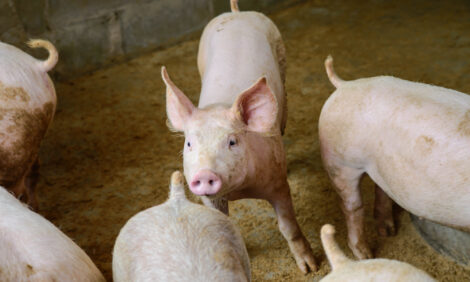



May Decline in Pork Exports Less than Feared
US - While May was expected to be the month in which US pork exports were most affected by A-H1N1 influenza, the impact has not been as negative as some analysts had predicted, according to an analysis of USDA statistics by the US Meat Export Federation (USMEF).May pork plus pork variety meat exports totaled 143,682 metric tons (316.8 million pounds) valued at $342.6 million. This is down 9 per cent in value and 9.5 per cent in volume from April, and down a substantial 24 per cent in value and 27 per cent in volume compared to May 2008. But spring of 2008 was a historic high point for US pork exports, and a repeat of those results was not anticipated even before A-H1N1 influenza hampered demand and led to significant market closures for US pork.
When compared to May 2007, pork exports in May 2009 actually increased 43 per cent in volume and 36 per cent in value, and surpassed the volume and value achieved in any single month of that year. For the first five months of 2009, exports are down 4 per cent in volume to 791,745 metric tons (1.7 billion pounds) and 1 per cent in value to $1.8 billion from the same period last year. It is also important to note that despite speculation about the domestic market absorbing excess pork due to sluggish exports, the per centage of total production exported (23.3 per cent) is roughly on pace with 2008.
"Certainly we don’t like to see a decline in pork exports for any reason," said USMEF Chairman Jon Mr Caspers, a pork producer from Swaledale, Iowa. "But considering the blow we were dealt by A-H1N1 influenza, on top of an already shaky global economy, the May results were not as lackluster as some had feared. But now we need to put these trade suspensions and other barriers behind us and work aggressively to ensure that these effects don’t linger."
Some countries either fully or partially closed to US pork during May, and a few markets – including China – remain closed today. But Mr Mr Caspers was quick to praise the trading partners that lived up to their obligations by remaining open to US pork and worked to dispel misinformation that attempted to connect pork consumption with A-H1N1 influenza.
"USMEF worked very closely with the governments of Mexico, Japan, Korea and many other countries to keep these markets open and to ensure that their trade policies remained science-based," he said. "Despite considerable pressure in some of these countries, most remained fully open. Consumer demand took a hit in the early stages of the outbreak, but seems to have bounced back fairly quickly as people become better informed about the safety of US pork."
Despite being regarded as the epicenter of the A-H1N1 outbreak and enduring a weeklong shutdown of most commercial activity in early May, Mexico performed fairly well for the month. While pork and pork variety meat exports to Mexico declined by about 15 per cent from April, volume was still 18 per cent higher than in May 2008, totaling 34,227 metric tons (75.5 million pounds). For the first five months of the year, Mexico has increased its imports of US pork by 48 per cent in value and nearly 60 per cent in volume over the same period last year. It has been the leading volume destination for US pork (211,391 metric tons or 466 million pounds) and trails only Japan in terms of value ($315 million vs. $695 million to Japan).
Japan continues to perform exceptionally well for US pork, with results through the first five months of the year surpassing last year’s record pace by 4 per cent in volume (192,050 metric tons or 423.4 million pounds) and 17 per cent in value. Japan is still by far the top value destination for US pork, and trails only Mexico this year in terms of volume.
Other bright spots for US pork during the first five months of 2009 include Taiwan (up 75 per cent in volume and 63 per cent in value over January-May 2008), Australia (up 33 per cent in volume and 35 per cent in value), the Caribbean region (up 56 per cent in volume and 53 per cent in value), and Central and South America (up 25 per cent in volume and 37 per cent in value).
Conversely, exports to the Hong Kong/China market have declined by 46 per cent in volume and 48 per cent in value while Russia has fallen by 34 per cent in volume and 35 per cent in value. These results are due in part to the trade suspensions imposed as a result of A-H1N1 influenza, but both countries have also been making concerted efforts to bolster domestic pork production and reduce their reliance on imports.








